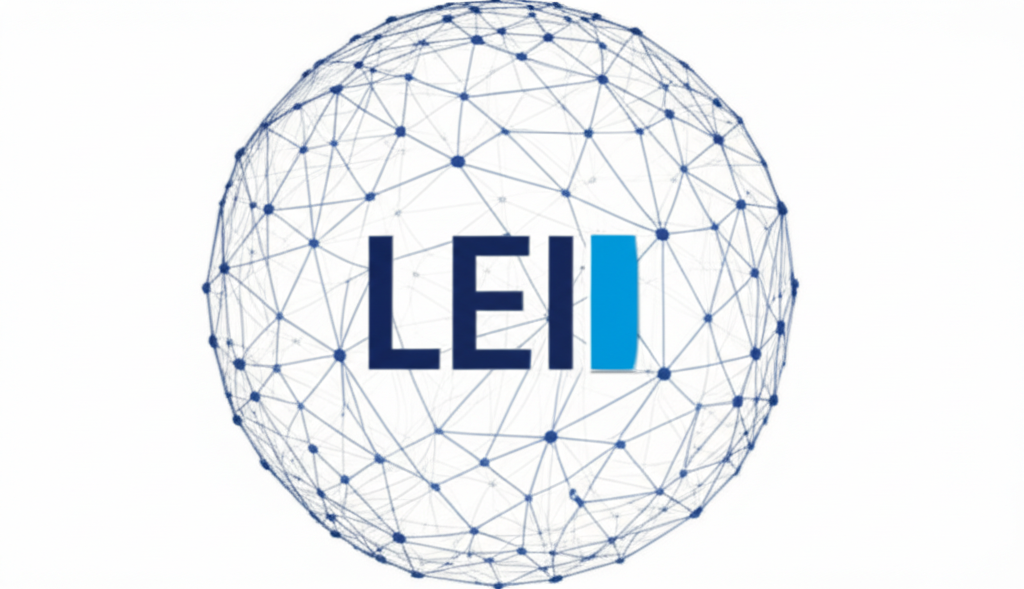Importance of the LEI in Cross-Border Trade Digitization
The LEI, a unique 20-character alphanumeric code, acts as a global “business passport.” Its importance in cross-border trade digitization stems from several key benefits:
-
Enhanced Transparency and Trust: The LEI provides a clear and verifiable identity for all parties involved in a transaction, significantly reducing the risk of fraud, identity theft, and false invoicing in global supply chains. This transparency builds trust among trading partners.
-
Streamlined Operations and Reduced Costs: By offering a universal identifier, LEIs simplify data management, compliance, and reporting processes. This eliminates the need for multiple, disparate identifiers and complex verification procedures, leading to faster and more efficient international trade transactions.
-
Improved Risk Management: For financial institutions and businesses, the LEI provides a consistent way to identify counterparties, enabling more accurate risk assessment by offering better visibility into an entity’s relationships and market activities.
-
Regulatory Compliance: LEIs are mandated in various regulations across major markets (e.g., EU, UK, US, India) for financial transactions and reporting. Adopting LEIs helps businesses efficiently comply with these regulations, reducing administrative burdens and potential penalties.
-
Foundation for Digital Transformation: The LEI is considered a fundamental building block for secure, transparent, and efficient digital operations across various sectors, connecting elements like shipping, customs, and finance.
Understanding ISO 17442
When you mention “17442,” you are referring to ISO 17442, which is the international standard developed by the International Organization for Standardization (ISO). This standard defines the structure and attributes of the Legal Entity Identifier (LEI) code. It specifies the 20-character alphanumeric format of the LEI and the essential “Legal Entity Reference Data” associated with it. This reference data typically includes:
-
The official name of the legal entity.
-
The address of the legal entity.
-
The country of formation.
-
The entity’s legal form (e.g., LLC, Corporation).
-
Information about the entity’s ownership structure (who owns whom).
This standardization ensures that LEIs are neutral, without embedded intelligence or country codes, making them suitable for automated processing and global use.
How LEI Brings Change and Aids Interoperability
The LEI system is designed to bring significant change and support the goal of “one world one identity” through:
-
Enabling Digital Transformation: LEIs are not just for regulatory compliance; they are strategic enablers for digitizing trade. They provide the verified identity necessary for automated processes, such as electronic bills of lading (eBLs) and other digital trade documents, enhancing security and efficiency.
-
Automated Identity Verification: The advent of the verifiable LEI (vLEI), a digital credential based on the LEI, further enables instant and automated identity verification between transacting parties. This is critical for achieving a truly seamless digital trade environment.
-
Fostering Global Interoperability: As a global standard, the LEI system inherently promotes interoperability among diverse systems and jurisdictions. It allows for a uniform method of entity identification, which is vital for electronic trade documents to be recognized and accepted across different legal and technical frameworks. This eliminates the complexities of managing multiple proprietary identifiers.
-
The “One World, One Identity” Goal: The Global Legal Entity Identifier Foundation (GLEIF), the managing body of the LEI system, actively champions the vision of “one identity behind every business.” The LEI’s ability to uniquely and consistently identify legal entities globally is a significant step towards this goal, simplifying cross-border interactions and fostering a more unified global marketplace. Efforts like GLEIF’s LEI Mapping Certification also help connect the LEI with other existing identifiers, further enhancing data reconciliation and interoperability across different identity platforms.
-
Supporting Cross-Border Payments: The LEI is endorsed by the Financial Stability Board (FSB) as a key component in enhancing cross-border payments, demonstrating its role in verifying entities involved in payment flows and improving overall financial system stability.
By integrating the LEI into your website and trade digitization initiatives at Autom-axis.com, you can enhance trust, streamline processes, ensure regulatory compliance, and contribute to the broader vision of a globally interoperable and transparent digital trade ecosystem.

